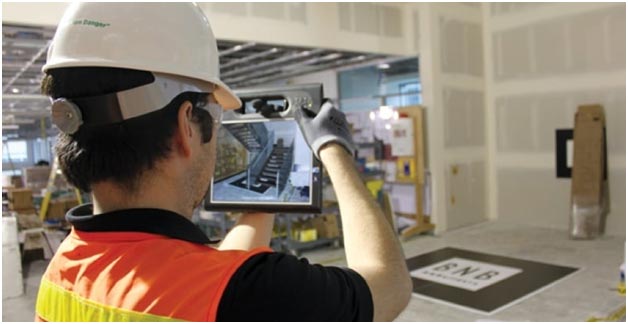Assisted Reality Driving Occupational Safety in Organisations
Immersive technology is being adopted by many businesses today, changing the way we view, interact and work with the world around us. Part of this, assisted reality is helping many industries to accelerate digital transformation efforts and drive productivity. Assisted Reality, or “aR”, works by adding an extra layer of digital information to the user’s field of vision via a wearable device – without interfering with or changing what they’re seeing in the physical world.
For example, when using a RealWear device the user’s screen sits just below the eyeline, allowing the user to easily glance down to access the information and support needed while keeping their main field clear. RealWear aR wearables are also voice-controlled and PPE compliant so the user doesn’t have to down tools or remove safety equipment. This allows workers to work more efficiently and safely.
Improving Productivity with AR
Maximising the capacity of available human resource adds a significant advantage, and assisted reality wearables are purpose-built to support this goal. Providing hands-free access to the right information at the point of need, aR can improve accuracy and efficiency, directly contributing to a more productive workforce. Examples of where aR can help include:
Remote Expert
Malfunctioning machinery or equipment damage typically requires the deployment of specialist or senior engineers to resolve the problem. By using RealWear aR wearables though, frontline workers simply share what they are seeing and hearing with a remote expert, who can then guide them step by step to fix the issue – removing the need for unnecessary travel expenses and improving time to resolution.
“Remote expert” applications can also accelerate training for new employees, getting them into the field faster while still ensuring they have remote access to their mentors for support on the job. It also means mentors can support more trainees across multiple locations, increasing their own productivity.
IIOT Data Visualisation
With the right application and supporting data, workers can gain access to real-time, actionable information about the machines they’re using, inspecting, or servicing via a RealWear device. IIoT visualisation can increase productivity by enabling predictive maintenance, providing workers with a more complete picture of the machine’s status so they can make smarter, more informed decisions.
Digital Workflow
Digitising standard operating processes (SOPs) in the form of digital workflows can help to avoid missteps and improve compliance, ensuring workers follow each necessary element, and enabling them to capture appropriate evidence to show it has been completed. RealWear assisted reality wearables visualise the workflow and allow the worker to follow it hands-free, using voice-control and an on-board camera to capture their evidence. Many organisations find that this increases productivity by speeding up the process.
Document Navigator
Workers can also use a RealWear device to navigate any number of documents relevant to the task at hand – these could be technical diagrams, training videos or manuals for example. Giving the user easy access to the information needed, they can work more efficiently and increase their productivity.
As of result of these various applications, businesses who have already adopted RealWear’s aR equipment have reported up to a 33% increase in efficiency and 90% reduction in inspection time, while also achieving a 70% increase in safety compliance. In 2021, RealWear’s pioneering efforts were even recognised by the PTC Partner Network for revolutionising productivity, highlighting its impact within the workplace.
Customer Case: Vestas
Vestas Wind Systems A/S is a Danish company that manufactures, sells, installs, and maintains wind turbines all over the world. 30% of Vestas’ current workforce is due to retire within the next 10 years, so the business faced the challenge of how it could facilitate effective knowledge transfer before this occurs. The business also wanted to transform its paper-based processes to ensure that it appealed to younger workers.
To address these challenges, Vestas selected RealWear to support remote expert and digital workflow applications. Adoption of assisted reality in this way not only tackled their knowledge transfer and digitisation goals, but also enabled all their employees to be more focused and work more productively:
“For the first time, the technology is getting out of the way. Finally, we can allow technicians to focus 100% of their time to put value into our products. For a company like ours, a reduction in time spent on non-value-added tasks such as registration of parts or operation status is of huge importance and provides us with an extremely competitive edge,” said Mark Jaxion, Vestas’ Senior Specialist of Leading IoT and Industry 4.0 Strategy.



